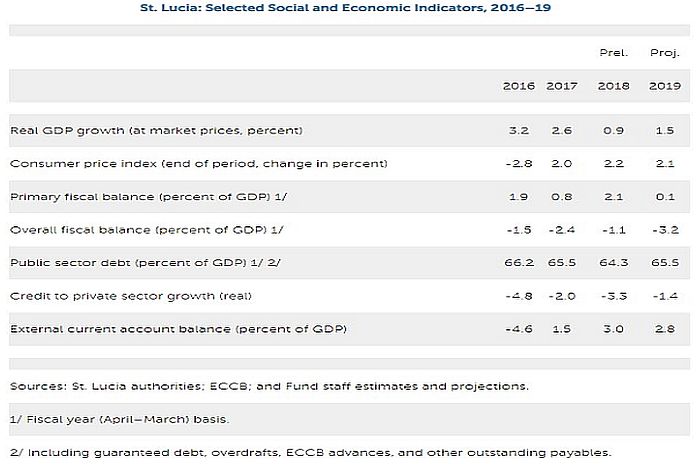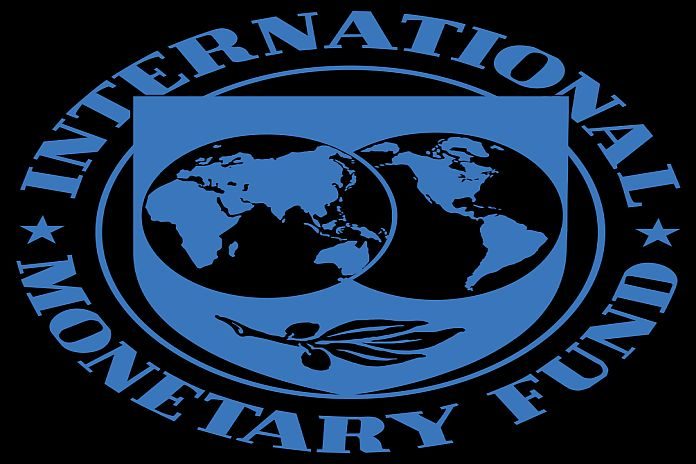CASTRIES, St Lucia — An IMF mission visited Saint Lucia during October 29-November 8, 2019, for the annual Article IV consultation discussions on economic developments and macroeconomic policies. At the end of the mission, Ding, mission chief for Saint Lucia, issued the following statement.
Saint Lucia near-term growth prospects are favorable, supported by large infrastructure investments and robust tourist inflows. However, longer-term growth continues to be impeded by high public debt, lingering vulnerabilities in the financial system, and structural impediments to private investment. To enhance economic resilience in an increasingly precarious external environment, near-term policies should focus on rebuilding fiscal space and addressing risks to financial stability. Concerted efforts are also needed to mobilize climate financing and unlock potential growth through supply-side reforms.
- Robust tourism inflows have sustained economic activity despite delays in public infrastructure investment. Growth picked up in 2019 with record growth in tourism activities more than offsetting a contraction in construction. Preliminary information also shows a further improvement in the current account. Unemployment has declined somewhat but remains high at 18 percent. Inflation remains subdued.
- Near-term growth prospects are favorable, albeit with downside risks. The commencement of large public infrastructure projects by the year-end is expected to substantially boost growth in 2020-22. The major upgrade of the international airport and the road network will help address capacity constraints and has the potential to catalyze a more durable expansion of the tourism sector and related activities. Downside risks to the outlook include a deeper-than-expected slowdown in major source markets for tourism, energy price shocks, disruptions to global financial markets, and loss of correspondent bank relationships. Saint Lucia’s high vulnerability to natural disasters constitutes an ever-present risk to both growth and the fiscal outlook.
- Fiscal policies should be geared toward rebuilding policy space and ensuring public debt converges to the ECCU target of 60 percent of GDP by 2030. Prudent fiscal policies in recent years, supported by revenues from the citizenship-by-investment program (CIP), have helped to stabilize public debt as a share of GDP. The primary fiscal position is projected to remain broadly balanced in 2019, notwithstanding additional salary expenditures and retroactive wage increases from the recently concluded wage negotiations. However, the still elevated level of public debt, currently at 65 percent of GDP, leaves the government with little fiscal space to react to shocks. The debt-financed infrastructure investments, despite being on concessional terms with long-run repayment largely covered by new revenue measures, will move public debt further away from the regional target in the absence of fiscal consolidation efforts. The need to invest in climate resilience and the uncertainty over future CIP revenues pose additional challenges to public finances.
- The government’s near-term focus should be on revenue-enhancing measures and investing to build resilience against climate related shocks. The fiscal measures that have been announced—including reforms to the personal income tax and the residential property tax—are expected to be budget neutral in the near term. This underscores the need to restrain current spending (particularly the public wage bill) and to mobilize additional revenues from the hotel accommodation fee, introducing a carbon tax, and reducing the scope of VAT exemptions. Since some of these measures will likely be regressive, they should be introduced in parallel with targeted transfers that offset the impact of these measures on poor households. Concerted efforts are also needed to mobilize donor grants to fund investments in climate resilience. Any over-performance of the CIP, or of other revenue sources, should be directed toward financing a self-insurance fund—that would be invested in liquid, highly rated, international assets—to bolster the economy’s resilience against natural disasters.
- The government’s commitment to adopting a fiscal rule to guide fiscal policy over the medium-term is welcome. To be effective, the fiscal rule should encompass a comprehensive definition of fiscal activities, including the fiscal costs of natural disasters and the lumpy expenditure associated with infrastructure investment. The fiscal rule should be part of a broader fiscal responsibility framework that embeds appropriate institutional and governance arrangements (including oversight and accountability) that ensure both the appropriate degree of flexibility as well as enforceability of the fiscal rule. The fiscal rule will need to be carefully calibrated to strike the balance between credibly meeting the debt target and providing space for much-needed resilience building.
- To support private sector investment, measures are needed to address inefficiencies in financial intermediation. The prolonged contraction of bank credit to the private sector remains a significant headwind to the domestic economy. This in part reflects banks’ steady efforts to repair their balance sheets, which should continue. However, there is scope to improve credit market efficiency by completing legislative initiatives to modernize foreclosure and insolvency legislation thereby facilitating recovery of impaired loans and collateral, adopting the harmonized legislation needed to establish a regional credit bureau and registry, and taking steps to allow for the greater use of movable property as loan collateral.
- Emerging financial sector risks warrant a more assertive approach to regulation and supervision. The contraction in domestic lending and excess liquidity have led local banks to increasingly allocate their asset portfolio to overseas debt securities. This has supported bank profitability but may also expose the sector to losses if global financial market conditions deteriorate and risk premia rise. The rapid expansion of credit union transactions and membership has increased the sector’s macro-financial significance. Loan delinquencies by credit unions are high and some institutions have relatively limited prudential buffers which increases the sector’s vulnerability to shocks. The swift adoption of the Harmonized Co-operative Societies Act, combined with a strengthening of supervisory oversight of the non-bank financial sector, remain key policy priorities. In addition, continued efforts are needed to satisfy international taxation and AML/CFT standards.
- Saint Lucia is committed to further enhancing resilience to climate change and natural disasters. The government’s infrastructure programs include a commendable focus on building resilience to natural disasters. Progress has also been made in implementing recommendations of the 2018 Climate Change Policy Assessment including updating the national and sectoral adaptation plans, preparing a climate financing strategy, and mobilizing resources from the global climate funds. To address the remaining institutional and financing gaps in the climate adaptation and mitigation strategy, efforts are needed in the active costing of climate projects, improving public financial management of climate financing and outlays, and mobilizing private investment in mitigation and adaptation.
- Decisive and targeted reforms are needed to address supply-side impediments to long-term growth. Enhancing labor market performance and productivity will require a better alignment of the education system with labor market needs. There is also scope to improve the business environment especially by enhancing delivery of online government services and access to credit, reduce electricity costs by making greater use of renewable energy, further diversify the economy toward higher-value exports, and increase local content in the tourism supply chain.






